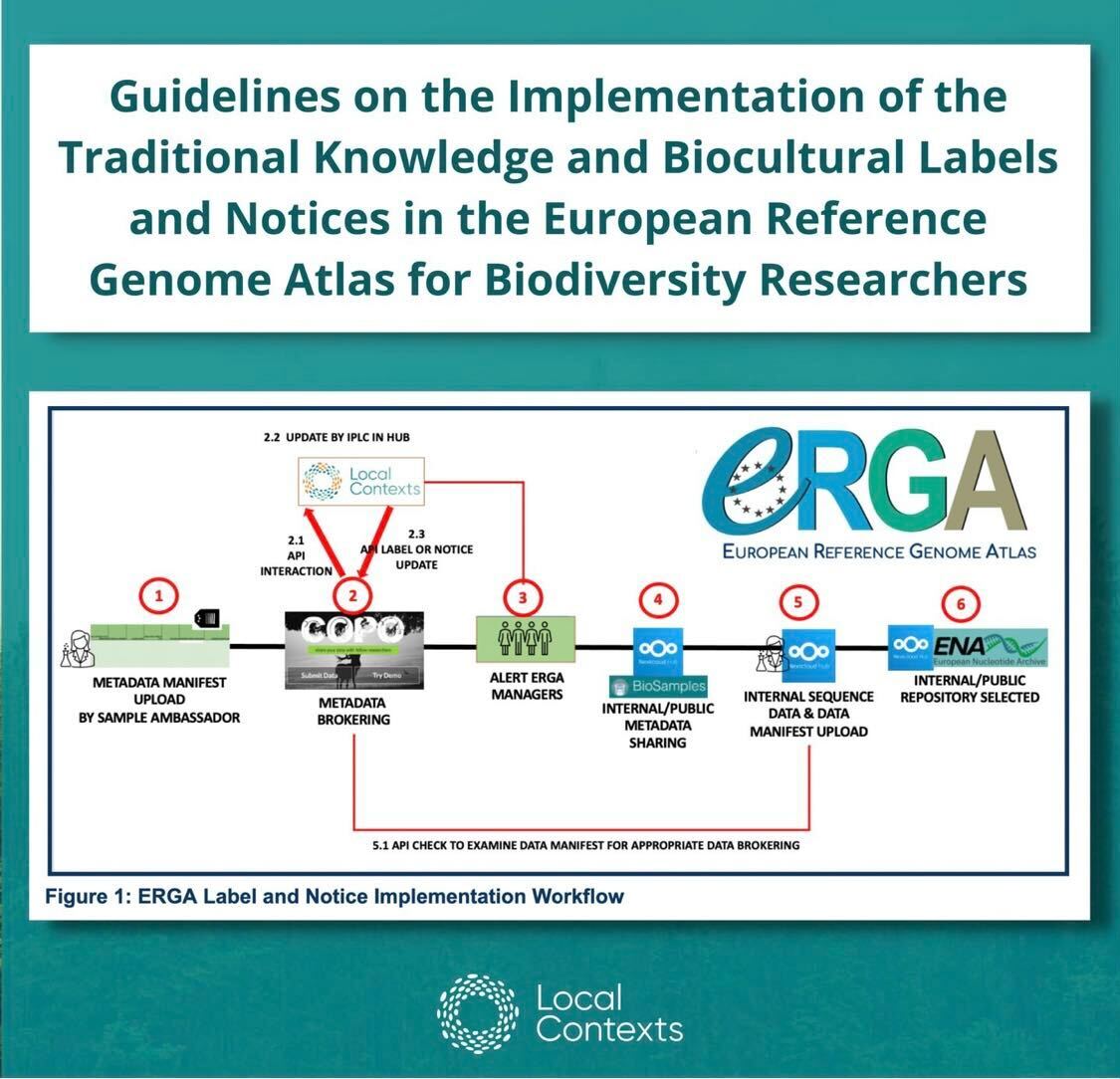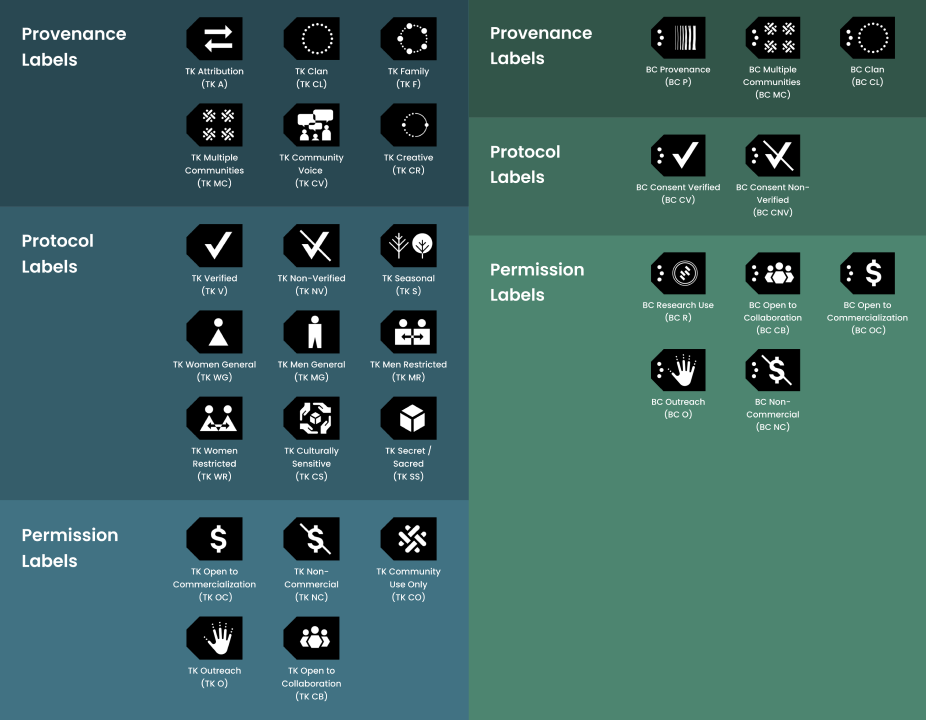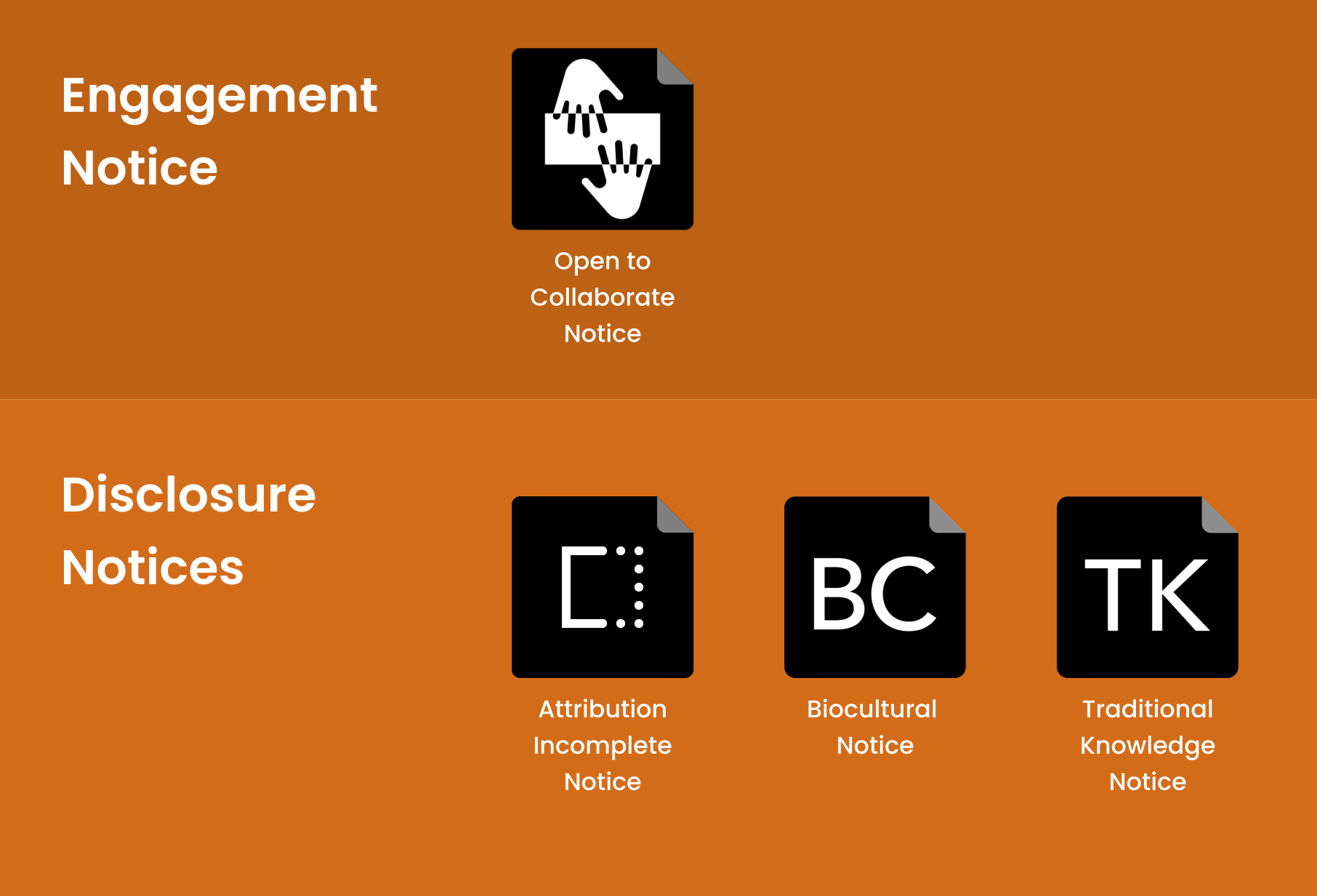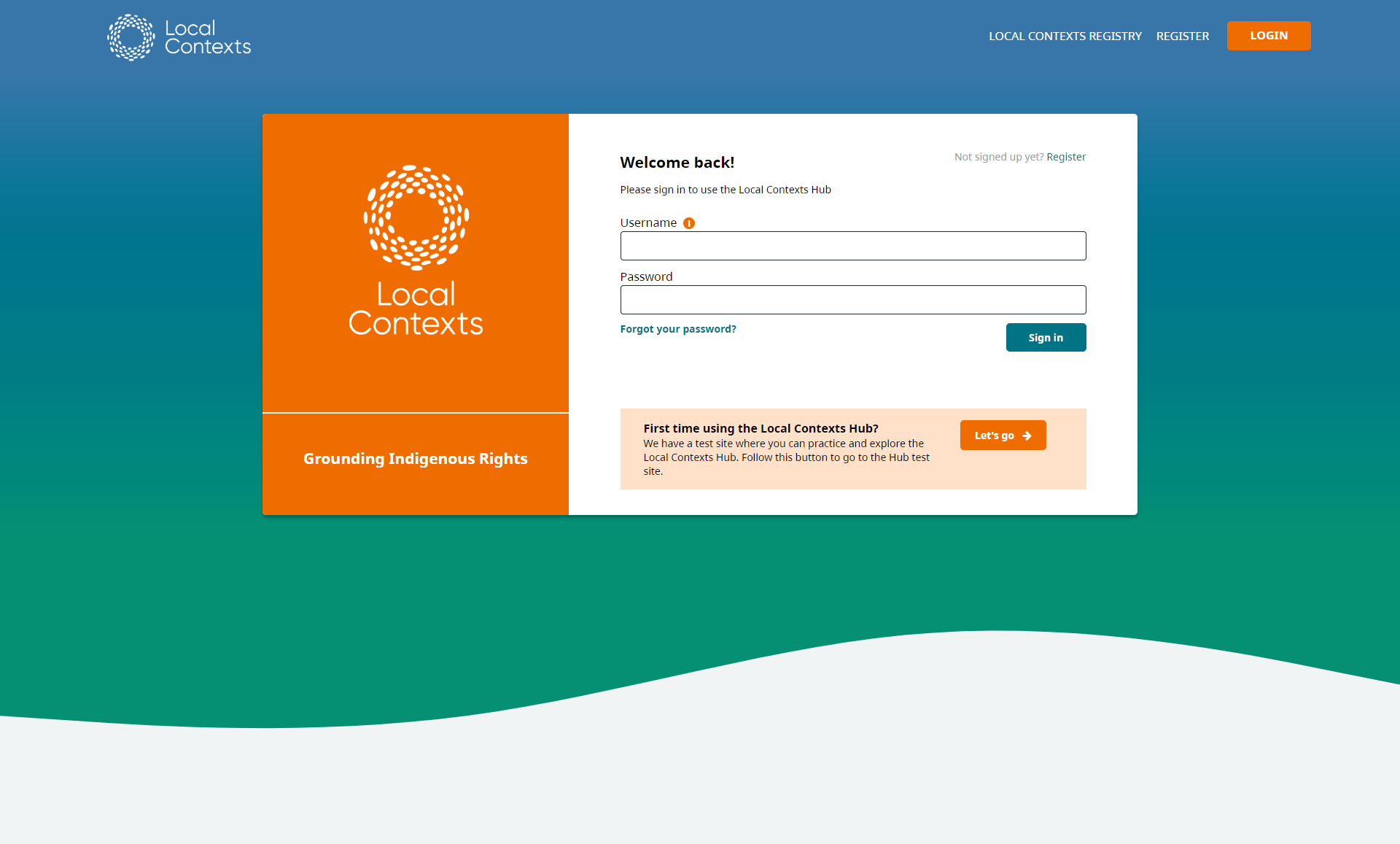Guidance Documentation for Implementing Labels in ERGA

The European Reference Genome Atlas (ERGA) in partnership with COPO and Local Contexts has created a guide for biodiversity researchers to support the inclusion of Indigenous Peoples and Local Community rights and interests in metadata.
The guidelines emphasize the importance of inclusive and responsible metadata, and describe how Local Contexts Labels and Notices can be a tool for that effort. The guide is a good reference for anyone considering how to implement the Labels and Notices in researcher workflows and systems.
“Guidelines on the Implementation of the Traditional Knowledge and Biocultural Labels and Notices in the European Reference Genome Atlas for Biodiversity Researchers” version 1 was written by Ann M. Mc Cartney (NIH); Astrid Böhne (Leibniz-Gemeinschaft); Libby Liggins (Massey University); Rob Davey, Felix Shaw (COPO); Stephanie Russo Carroll (Native Nations Institute); Ashley Rojas, Corrie Roe, Janette Hamilton-Pearce, Maui Hudson, and Jane Anderson (Local Contexts).
Read the guidelines here.







